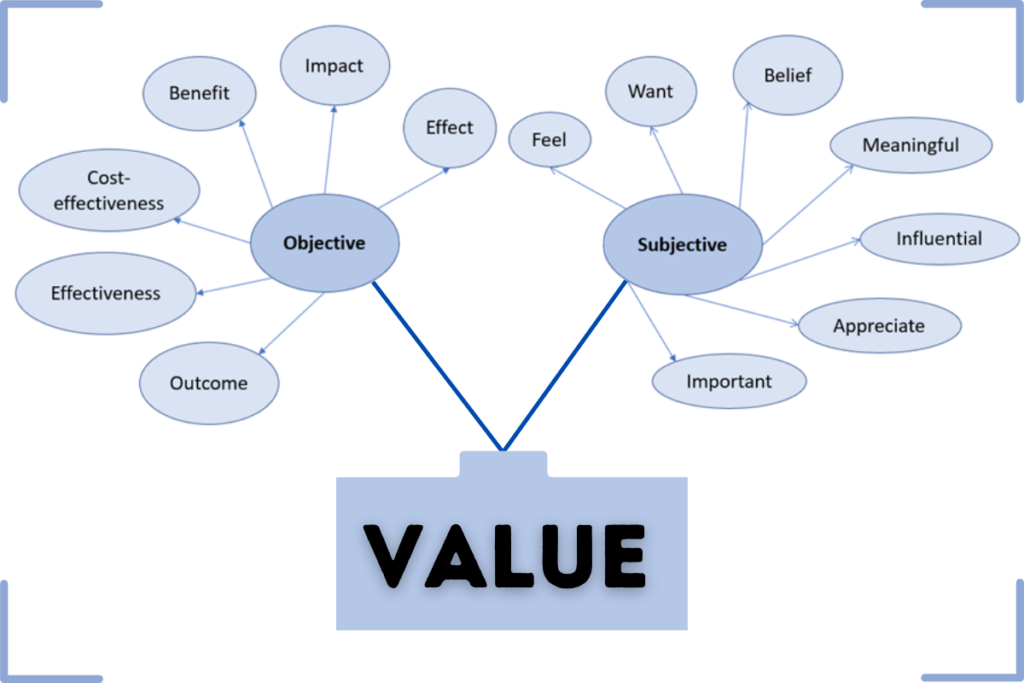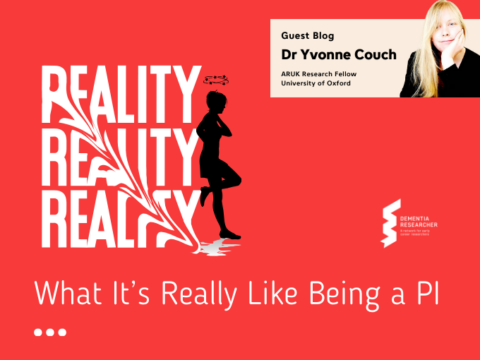Have you ever been questioned by a supervisor, colleague, or member of the public about what a certain term actually means? For me, this word was value. Value quickly became the focal word that the PhD research questions, aims, and methodology grew from. ‘Social Value’ is the primary concept of value that will be used in the PhD. However, it was assumed that being able to conceptualise value in the context of the research more specifically will improve the quality of the thesis. In hindsight, an incredibly optimistic piece of work, I’m not sure why I thought I could do any better than the likes of Aristotle and Smith. But anyway, I had a crack.
Concepts of value have evolved and gained significance in modern times, particularly in Health and Social Care. From an economic perspective, value is defined in terms of utility (benefit obtained from the resources available). Value is also socially constructed by what is being produced or depleted in everyday interactions. There is no consistency to definitions of value in Health and Social Care which is problematic for understanding what we mean by value, and how it is applied in relation to community-based interventions for people affected by dementia.
A Concept Analysis was undertaken to define value in the context of community-based interventions for people affected by dementia, and unsurprisingly findings highlight the complexity and challenges of defining value in this context, but also the usefulness of Concept Analysis to build understanding of the concept’s essential elements and relationships. In this post I briefly explain what Concept Analysis is and how it may be of use to you, how and why I used it, and what it told me about defining value in this context.
Concept Analysis
Concept Analysis is traditionally used in research and theory development to provide clarity to an abstract idea. There are several approaches to concept analysis, all of which share a similar purpose to determine the defining attributes and characteristics of the concept. I have recommended some reading at the bottom of the post.
I opted for Rogers Evolutionary Concept Analysis, which explores the contextual basis of a concept to understand the situations and variances in which the concept is used by people with ‘diverse perspectives’, to explain the concepts ‘current status’.
The analysis followed stages of Rogers framework, which are, (1) definitions and wider use of value; (2) surrogate terms; (3) contextual basis (antecedents, consequences, attributes); (4) model of the concept; (5) conclusion; and (6) implications for further development of the concept. To make this post digestible and remotely interesting I’ve skipped the background stuff and search design, and start at the fun stuff, the findings.
Definitions and wider use of value
Economic and sociological inspired definitions that are acontextual were found in the literature, along with adapted and operationalised definitions of both value and added value. Broader concepts of value, such as Social Value and Value-based Healthcare also featured.
Surrogate terms
Surrogate terms are those identified in the literature that are used to express the concept. Benefit, impact, importance, and appreciate were frequent terms. The relationship between terms that can be grouped into subjective, and objective is interactive and developmental. For instance, the belief, meaning, and importance attached to community-based interventions by researchers, allied professionals, and people, ultimately rationalises and determines benefit, effectiveness, and impact.
Word classes were also identified, including valued, values, valuable, valuing and valuation.
The limited number of definitions, multiple word classes and surrogate terms, used interchangeably at times, added complexity to the analysis and further justifies the need for better understanding of what value actually means in specific contexts its applied.

Contextual basis of the concept
To define the concept the contextual and temporal basis, or antecedents and consequences, were identified.
Literature provided two definitive and distinctly interrelated antecedents:
- a need or desire to understand the views and experience of people affected or that affect community-based interventions, and
- to demonstrate, prove/disprove the (best) quality and nature of results relating to community-based interventions
Antecedents determine the consequences. Consequences of value found were, shared decision making; valuation; and internal and external investment and development.
Attributes
Attributes are the defining characteristics of the concept found in the analysis. These were stakeholder- and person-centred; measurable; time and context dependant; and multidimensional (health, social, and economic). The generalisable nature of these attributes mean they cannot be applied to a precise incidence of the concept with definition, and therefore my ambition of defining value in the context of community-based interventions fell well short. However I feel there is still valuable insight from the piece of work.
Concept Model
Despite the lack of detailed information required for a ‘pure’ definition, I was able to develop a model of the concept, that similar to the usefulness of illustrating and describing an interventions process or Theory of Change, can be used to deliver a shared understanding, inform research agenda and practice, and support application of the concept.

Summary
In summary, using Concept Analysis, while not solving the problem of pinning down value, did help me identify and explain the varying ways value is created and conceptualised in this context, and how parts of the value equation combine, providing a broad but integrated concept. The hope is that I can publish an article form the analysis and a space in which questions and hypotheses can be created that can drive concept development. Again, maybe a little optimistic.
Implications for further concept development
What I believe to be the most important stage to the process of Concept Analysis is this idea of further concept development. There were several factors that I feel should not be ignored when considering value. These are context, stakeholder involvement, and research approach.
Contextual factors influence on definitions of value cannot be overstated. Without appreciating context there is no appraisal of complexity which is fundamental to understanding why and how interventions work.
Facilitating stakeholder perspectives will ensure concept development is socially relevant. While literature reviews support our understanding of value, they cannot consolidate it. This was a limitation of the analysis.
Many studies assert the importance of timeframe and comparison trials on understanding and determining value. This is challenging because rigorous, longitudinal, comparison studies are cost and resource heavy, underappreciate context and wider factors, and generalise information that can oversimplify complexity, and thus value.
Many thanks for taking the time to read or listen, and as always please feel free to contact me with any criticisms or questions.
Nathan
References
- Walker, L. and Avant, K. (2011) Strategies for Theory Construction in Nursing. (5th ed.). Upper Saddle River, NJ, Pearson/Prentice Hall.
- Paley, J. (2019). Reading concept analysis: Why Draper has a point. Nursing Philosophy, 20(4). https://doi.org/10.1111/nup.12252
- Rodgers, B. L. (2000). Concept analysis: an evolutionary view. Concept Development in Nursing : Foundations, Techniques, and Applications, 77–102. https://ci.nii.ac.jp/naid/10030084728/

Nathan Stephens
Author
Nathan Stephens is a PhD Student and unpaid carer, working on his PhD at University of Worcester, studying the Worcestershire Meeting Centres Community Support Programme. Inspired by caring for both grandparents and personal experience of dementia, Nathan has gone from a BSc in Sports & Physical Education, an MSc in Public Health, and now working on his PhD.

 Print This Post
Print This Post




